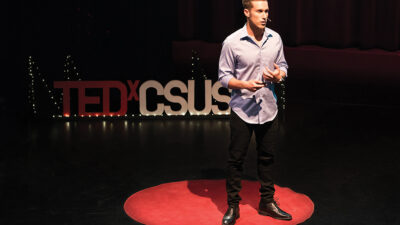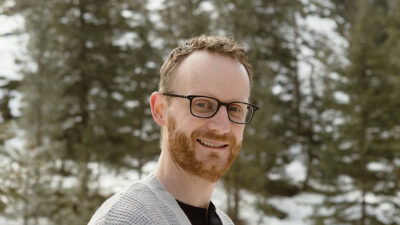View the full story, including all images and figures, in our monthly digital edition A school is the voice of a community’s outlook and commitment to its future. One can determine how healthy a school is by listening to it. Are children playing and laughing on the school playground? Are there well-attended performances in its theaters and the buzz of excitement in its hallways? Are the grounds being actively used by students for learning and physical education, and being routinely maintained by buildings and grounds staff?
MEP systems have voices, too—the sound of air moving through a grille, the start-up of a boiler, the alarm of a fire or security event. And exuding from the systems themselves are the echoes of the designers’ voices: what they presented to win the project, what they said (and didn’t say) during team meetings, and what they fought for during construction and commissioning.
Looking at this month’s cover showing an empty performing arts theater at the new Experimental Media and Performing Arts Center (EMPAC) at Rensselaer Polytechnic Institute located in Troy, N.Y., there is a palpable silence about the photo. The stage and seats are empty of performers, audiences, choreographers, and conductors. The piano is a cleft note indicating that this theater is for fine arts, and with that comes a whole lot of engineering and construction baggage.
With nothing happening, it should be quiet. No HVAC noise, no noise transmitted from other spaces or the outside environment.
The EMPAC article featured on the cover brings the design engineer’s voice to print so you can learn how his team addressed the many difficult challenges of the project. These include the north-facing atrium glass in a cold-winter climate and the RC-15 acoustic rating of five venues potentially hosting rehearsals, research, or performances simultaneously. Unfortunately, energy and acoustic performance data were not available at the time we went to press, so we’ll try to get back to you with how things are working in the near future.
The other articles and columns in this issue present the voices of a dozen engineers and facility professionals who are involved with school projects. What are they thinking? What are they doing? What are they up against?
Why this focus on schools? Because performance requirements are increasing for energy and sustainability, and budgets are shrinking due to the recession. Meanwhile, the science of education and the implications of federal, state, and municipal regulations are changing the way schools are funded, designed, constructed, and operated. For example, many schools are switching to full-year programs and having classes in the summer. How are these changes going to impact student and teacher performance (which ultimately impact school funding)? How are fire and life-safety systems being impacted?
The voice of schools is changing, but what schools are saying remains the same: Successful education is paramount. For that message to ring true, engineers need to have their voices heard, too.
Send your questions and comments to: [email protected]



